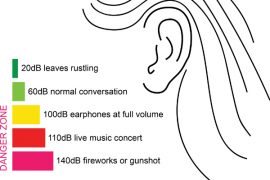By Sue Sveum
Everyone feels a little depressed from time to time. But there’s a difference between feeling sad when you’re unable to snag tickets to a Taylor Swift concert and major depression.
So what exactly is depression? How do you know if you have it? And how is it treated? Rachel Leonard, Ph.D., psychologist and executive director of clinical strategy with Rogers Behavioral Health and Leslie Taylor, MD, a psychiatrist at TMS Center of Madison help to break it down.
“To be diagnosed with depression, symptoms have to be significant enough to lead to substantial distress or difficulty in functioning,” explains Leonard, adding the two most important hallmarks include loss of interest or pleasure in most activities and a significantly depressed mood. “The odd thing about depression is that some of the symptoms can be opposites — like having difficulty sleeping, or, sleeping a lot.”
Taylor agrees, adding that depression is a mental illness that’s diagnosed when at least five screening guidelines are present for two weeks or longer. Two to four symptoms in that time may indicate mild or minor depression. Guidelines include:
- Little interest or pleasure in activities
- Feeling down or depressed
- Too much or too little sleep
- Feeling tired
- Poor appetite or overeating
- Feeling bad about yourself
- Trouble concentrating
- Moving or speaking slowly — or excessive restlessness
- Feeling you’d be better off dead
According to Taylor, women are generally about 30% more susceptible to depression. Leonard estimates that Rogers Behavioral Health actually sees twice the number of women than men.
“There seems to be a couple [of] reasons [for this] — related to thinking patterns, hormones, life experiences and social treatment,” Taylor says, “but then women also tend to be more open to seeking treatment.”
As far as age, statistics show depression peaking in the late teens and early 20s. “There’s often a small blip [also] among women in their 70s and 80s,” reports Taylor, “but it can really occur anytime.”
So how is major depression treated? Recognizing that every patient is different, Rogers Behavioral Health offers several treatment options based on a patient’s level of depression. There are two outpatient care options. “One is three hours per day, and the other runs about 61⁄2 hours,” explains Leonard. “Both are held in clinic and include individual and group work as well as meetings with clinical staff.”
Typically, treatment lasts 30 to 40 days — but it can vary. Sessions include a combination of patient-specific medi- cation along with a form of cognitive behavioral therapy (CBT) called behavioral activation that helps patients see
how depression has changed their behavior — and help them decrease known avoidance behaviors.
“Depression can feel really overwhelming and challenging,” says Leonard. “Our whole treatment team provides support and direction to help patients identify what they need to work on and to help them make small changes.”
ANOTHER TREATMENT OPTION
When traditional treatments such as medication and therapy don’t work, there’s a newer and less invasive treat- ment option that many patients have found to be effective.
Transcranial Magnetic Stimulation (or TMS) was approved by the FDA in 2008 as the first physical method of treat- ment for depression — earning a respected track record since then. While no referral is needed, insurance gener- ally requires patients to have tried and not had positive outcomes with four different anti-depressant medications before covering the treatment.
How does it work? “TMS stimulates the brain using magnetic fields to activate your neural network,” explains Taylor. “This boosts your neurons’ efficacy and creates new pathways in the area of the brain responsible for depression.”
She says TMS is particularly good for women with post-partum depression, since antidepressants can interfere with nursing. Like medication, TMS can take time to work, but patients typically see results after about 20 sessions — although that varies.
A typical treatment is 36 sessions of 20 minutes daily for six weeks, followed by a taper phase. “Nothing is required of patients during the session,” says Taylor. “But we definitely recommend positive thinking — to target the area of the brain you want to rewire.”




